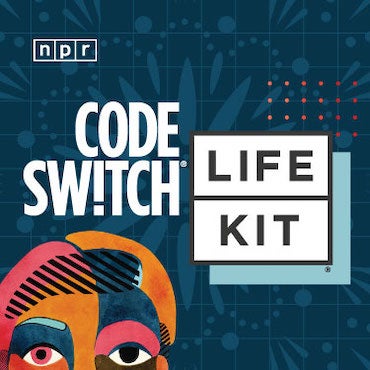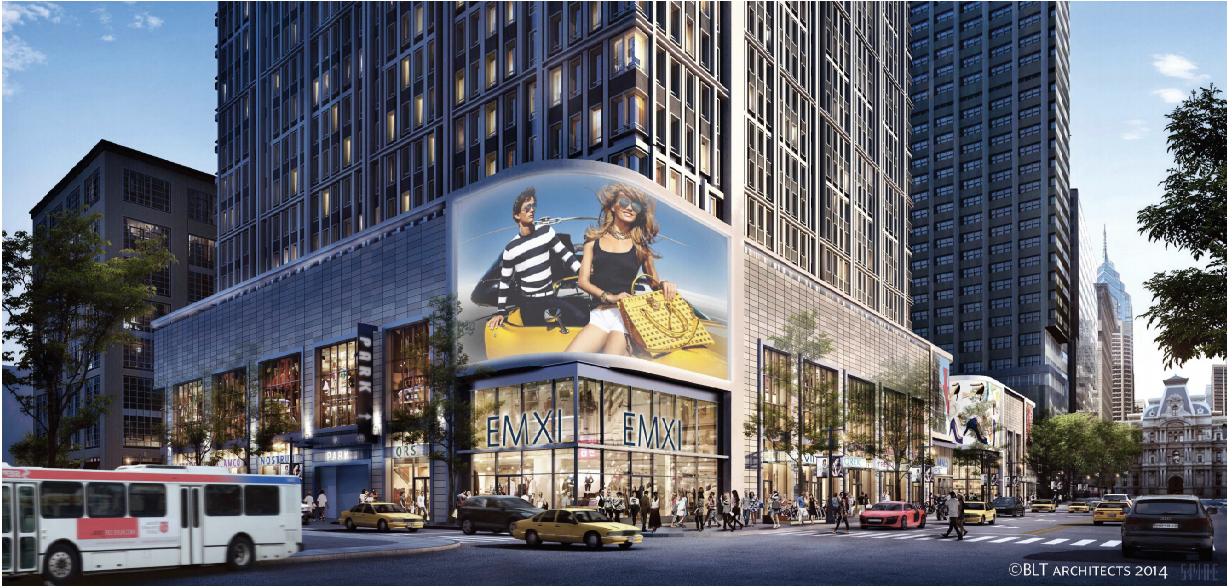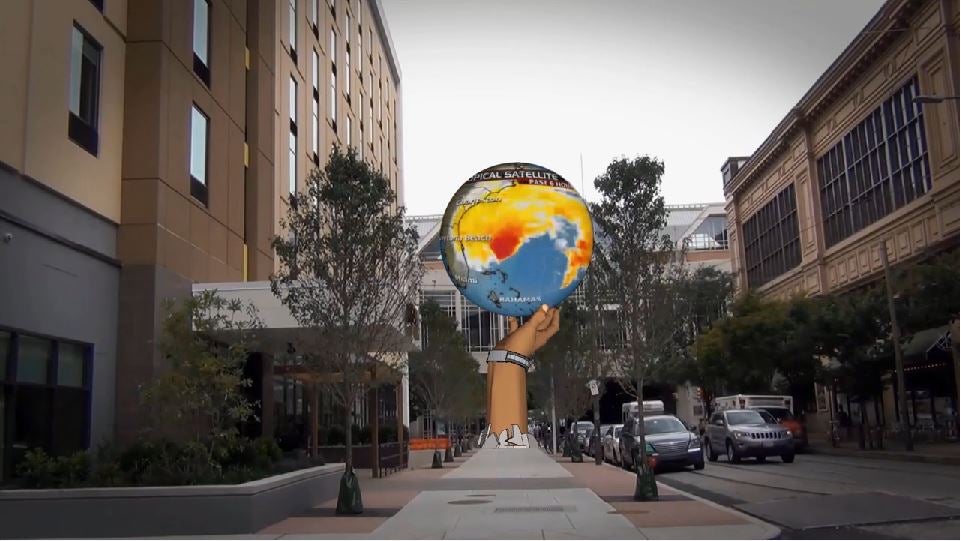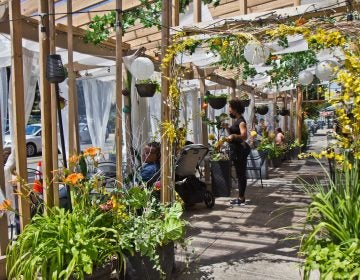As digital signs encroach, public realm sold short
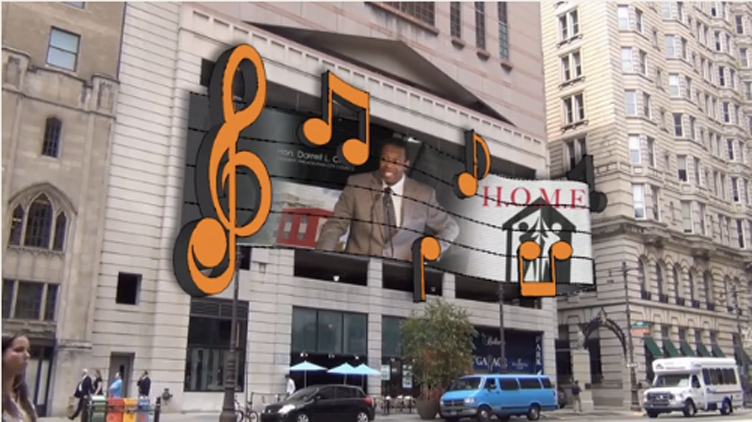
Imagine a three-dimensional globe of animated lunchmeat mixed with local news and weather displayed across from Reading Terminal Market or digital ads for H&M and Unclaimed Diamonds marching down Market Street facades. It could all be ours, Philly.
From blazing digital signage on Market East buildings to looming “Urban Experiential Displays,” Center City is about to get tarted up with new marketing platforms, sold to the public in the name of stimulating areas of the city core that have long been seen as limp and lagging.
The vision is to replace blank facades and dead corners with flashy displays, and spice up sidewalks with structures blasting out ads, peppered with public announcements.
But the city should be careful with what it’s willing to trade for ad spaces that enrich advertising companies and property owners at a public cost. These new displays are development incentives, but they are only as good for the public as what the city asks for in return. Just what constitutes public benefit and what is the quality of Center City’s public environment worth?
Consider first Market East’s Commercial Advertising District, passed by City Council and approved by the Planning Commission in 2011 in an effort to stimulate development and investment along Market East between 7th and 13th streets. In this zone, when property owners invest $10 million or more in public improvements they may install digital signage, measuring no more than 1,600 square feet, on properties with 100 feet of frontage on Market Street. The tradeoff: ad revenue in exchange for significant investment. In subsequent years the city is supposed to collect a paltry $650 licensing fee per commercial display face annually.
We’re now seeing property owners explore these digital displays as part of larger projects.
This year Brickstone Realty got approval to erect a 14-foot tall sign wrapping the crown of the historic Lit Brothers building on the 700 block of Market. In exchange for video-like signage the Public Improvement Plan includes new lighting to highlight the historic architecture, nicer sidewalks, and significant upgrades to the transit concourses and platforms below.
But what public improvement means for new construction is squishier.
The development team behind East Market, a large mixed-use complex that will replace Girard Square across Market Street from Reading Terminal’s headhouse, argues that the “public improvement” is the significant development itself – from jobs created to building materials used. That’s just fine under the law.
As Jared Brey reported in October, Philadelphia City Planning Commission chair and deputy mayor Alan Greenberger, confirmed that the advertising district is a development incentive, plain and simple.
A flexible definition of “public improvement” enables diverse responses to the needs of different sites, tailored to suit specific buildings. But the notion that any investment of more than $10 million can count as public improvement is a stretch of the imagination, particularly without standards for quality. Philly too often forgets that any development does not equal good development.
But Market East’s Commercial Advertising District looks downright rational compared to a recently introduced bill that would permit Orwellian-sounding “Urban Experiential Displays.”
“Urban Experiential Displays” (UEDs) are structures intended to show a mix of ads, public information, and other “original content” that would be permitted in the highest-density sections of Center City thanks to legislation introduced this month by Councilmen Mark Squilla and Kenyatta Johnson.
Catalyst Outdoor, the digital billboard company that helped craft the legislation, casts UEDs as “the convergence of art, architecture, and advertising.”
But since when were billboard companies qualified to design – and I use the term loosely – public art or architecture?
The first UED design concepts are tacky and flirt with the absurd. One is a huge sphere held aloft by a giant hand that appears to be breaking through the sidewalk across 12th Street from Reading Terminal Market. Another is a staff of music, accented with colorfully illuminated clef and notes, which would span the Bellevue Garage on South Broad Street. The third is a boxy sidewalk display outside the Convention Center that would be more suitable outside of a suburban high school than on North Broad Street. (For the full effect, this brief promotional video is a must-watch.)
These are signs, not sculpture, and they already look dated.
Plus, nothing says struggling nightlife district like a digital interface dressed up as a staff of music with, for example, ads for Target and PSAs for home heating assistance.
If the city is willing to let property owners and a digital billboard company create UEDs, they should at least be required to hire real sculptors to design the structures and digital artists to create new works to round out the ad-mix. (Unlike typical digital billboards, UEDs will be programmed with ads 70% of the time, with the other 30% divided among topics like news, public announcements, cultural information, and varied “original” content.)
In terms of design review, each UED will need approval from the Art Commission, which generally resists vulgar signage and is hard to win over with anything cheap looking. Approvals are also necessary from the Planning Commission and Department of Licenses and Inspections.
The types of messaging, illumination and scale permitted in the legislation for UEDs is potentially more overwhelming than for typical digital signage. UEDs can include flashing, real or illusory movement, projections, video, audio, and holographs, with limits for light and sound levels as well as hours of operation.
Where digital displays on Market East can be up to 1,600 square feet (e.g. a screen measuring 50 feet by 32 feet), the minimum UED video display area is 1,500 square feet. While the Commercial Advertising District legislation prohibits “free standing outdoor advertising signs,” UEDs can be placed in the public right of way, on a sidewalk, if the Streets Department approves. The city can even put UEDs on municipally owned property.
So how much is the quality of our city’s public environment worth when it comes to permitting UEDs?
Each UED requires a minimum investment of $2 million. Each UED will also be accompanied by $5.2 million awarded to a nonprofit group that is located in the same area as the UED. The first three prospective locations (the Bellevue Garage on South Broad, the corner of 12th and Arch, and the corner of North Broad and Race at the Convention Center) are already paired with receiving nonprofits: Avenue of the Arts, Reading Terminal Market, and Center City District.
This is essentially mitigation money. It’s a tacit acknowledgement that the community impact of the UEDS could be less than desirable. Here’s some dough to soften the blow. Unlike displays in the Commercial Advertising District, UEDs aren’t a development incentive, they’re handouts. As ad companies and property owners line their pockets, the public realm gets shortchanged.
We already have several LED lights shows around Center City – from the sequence of colorful illuminations on South Broad Street building facades to the schlocky preset program that plays on the South Street Bridge’s light towers. Given the proliferation of LED screens in a cash-strapped city, I can see the temptation to put ads everywhere. It’s almost too easy to be enticed by the versatility of programming and the promise of revenue.
Today the LED screens at Dilworth Park might promote programs in the park, but rules change and with a simple switch of content they could become marketing platforms.
One of the pet phrases for city boosters and politicians is saying Philadelphia aspires to be a “world-class city.” It’s hardly world-class to sell out our public spaces, particularly in more vulnerable districts like Market East that appear to be on the rise.
Instead we’re a city continually finding ways to put our public realm up for sale. That doesn’t make Philly look world-class. It just looks cheap.
WHYY is your source for fact-based, in-depth journalism and information. As a nonprofit organization, we rely on financial support from readers like you. Please give today.
